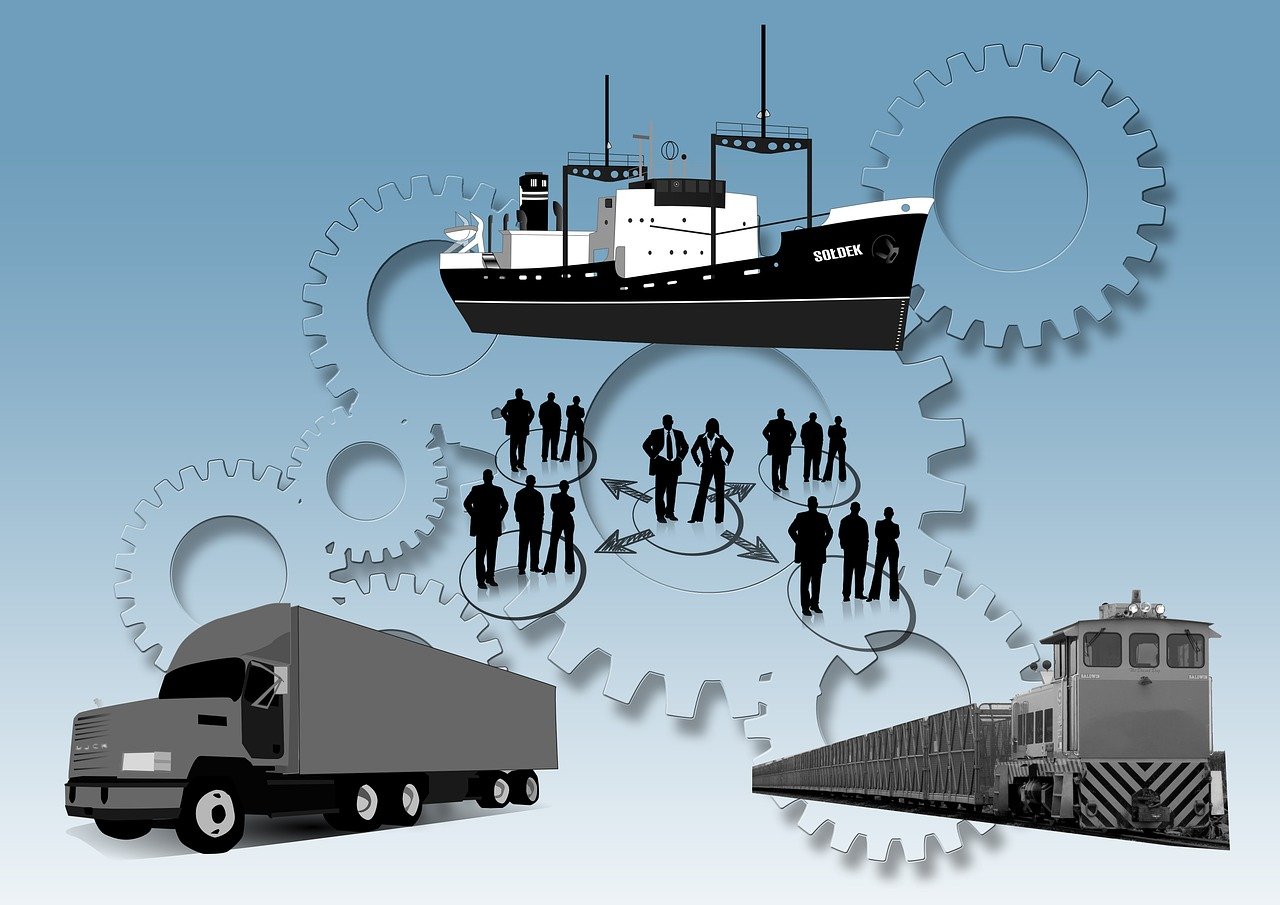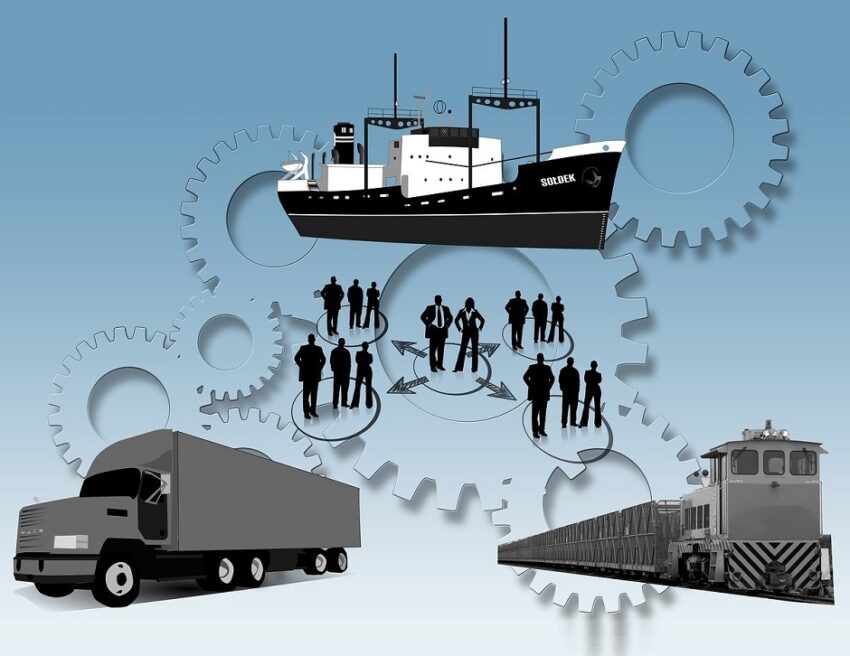In recent decades, the Indian Government has implemented various initiatives to enhance the country’s transportation and logistics industry, fostering increased profitability for both multinational corporations and independent freight forwarders. It is estimated that around 14 percent of India’s GDP is dedicated to the supply chain and logistics sector, a proportion nearly twice the average logistics cost seen in advanced economies such as the US, Japan, South Korea, and Singapore. One important endeavour of the Indian government to boost the logistics sector and transform the country into a global industrial hub is the creation of dedicated freight corridors.

Impact of dedicated freight corridors on the transportation and logistics industry in India
The logistics sector in India is going through a crucial transformation, driven by significant advancements in logistics infrastructure across the country. As India strives to transition from a services-oriented economy to an international manufacturing hub, businesses in the country anticipate substantial benefits in terms of reduced transit times for goods. This shift is expected to enhance overall efficiency and generate cost savings. The Dedicated Freight Corridors (DFCs) not only serve as an alternative to roads and the traditional Indian Railways but also complement existing freight transport modes. Strategic utilization of these corridors is seen as a key factor in diminishing logistics costs and expediting the establishment of new industrial hubs.
A noteworthy development occurred in October 2023 with the completion of the Eastern Dedicated Freight Corridor (EDFC) under the Indian Railways’ Dedicated Freight Corridor (DFC) project. Following the successful trial run of the inaugural freight train, the entire 1,337-kilometer length of the EDFC has been officially declared operational.
Objectives of the Dedicated Freight Corridor
On December 12, 2020, Prime Minister Narendra Modi inaugurated the Dedicated Freight Corridor (DFC) network, characterizing it as a transformative force for India in the 21st century and a catalyst for rapid national development. Beyond being a railway project, the DFC is considered a linchpin of the National Logistics Policy, with the main goal of reducing logistics costs from the current 15 percent of GDP to a more sustainable 8 percent by 2030.
The DFC’s significance lies in its role in streamlining freight transportation, contributing significantly to the efficiency, cost-effectiveness, and reliability of the transportation and logistics industry. This, in turn, is expected to play a crucial role in achieving the targeted reduction in logistics costs and thereby benefit the freight forwarders in several ways.
Moreover, the capacity expansion facilitated by the DFC is a key driver in realizing the objective of Indian Railways to attain a freight loading capacity of 3,000 MT within the next 6 years. The Eastern DFC, covering a length of 1337 km, and the Western DFC, spanning an extensive 1506 km, together form a comprehensive network. This extensive reach is designed to ensure a seamless flow of goods and commodities, fostering economic growth and promoting regional development.
How the Eastern Dedicated Freight Corridor is already enhancing the efficiency of the logistics sector
The 1,337-km Eastern Dedicated Freight Corridor (EDFC) is set to enhance the operational efficiency of freight trains by enabling them to achieve top speeds of 60-70 kmph. This marks a significant improvement compared to the current operational speeds, which typically range from 25-30 kmph. Although the corridor has been designed with the capability to support a maximum speed of 100 kmph for freight trains, achieving this goal may face challenges given the current operational context.
According to a World Bank report, DFCs are expected to play a pivotal role in helping India curtail its high logistics costs. This reduction is anticipated to enhance India’s competitiveness and contribute to economic efficiency. Additionally, the impact on transportation infrastructure is noteworthy. The introduction of each kilometer-long freight train on the EDFC is projected to replace approximately 72 trucks on average. This shift is anticipated to alleviate congestion on India’s heavily burdened roads and highways, which presently handle a substantial 60 percent of the country’s freight.
Furthermore, the transition from diesel-operated trucks to electrified rail, coupled with the adoption of energy-efficient corridors, is expected to result in a reduction in India’s fossil fuel consumption and contribute to lowering the nation’s carbon footprint. This move towards more sustainable and eco-friendly transportation methods aligns with the findings emphasized in the World Bank report.
How DFCs are driving industrial development
The Dedicated Freight Corridor holds significant promise in driving industrial development and revitalizing regions in India. Moreover a chief feature of the DFC is its role in establishing industrial zones at strategic junctions along its route. This helps to breath in a new life into some of the country’s economically disadvantaged and densely populated areas.
Presently, around 90 percent of Indian Railway’s freight services are concentrated on ten specific bulk commodities. However, with the expanded capacity of the DFC and the introduction of faster and more reliable transit times, the Indian Railway is poised to tap into new markets. These markets will primarily target higher-value freight sectors that are currently underrepresented in railway freight services.
The main beneficiaries of this project will be the power and heavy manufacturing sectors in the northern and eastern states covered by the corridor. These industries heavily rely on railways for the transportation of raw materials and the distribution of finished and semi-finished goods to both domestic markets and seaports along the eastern seaboard.
Apart from the economic benefits, this development is expected to create employment opportunities and stimulate economic growth in regions that have historically lagged behind in industrialization. The Eastern Corridor, stretching approximately 2000 km and passing through Uttar Pradesh and Bihar, is poised to bring jobs and much-needed development to some of India’s poorest regions.
Creation of multimodal logistics parks will further boost the transportation and logistics sector in India
Multi-modal logistics parks (MMLPs), a project launched by the Indian government in 2021, aimed at revolutionizing India’s freight logistics sector by providing multimodal connectivity infrastructure to various economic zones. As part of this initiative, MMLPs serve as pivotal hubs connecting various modes of transportation. Strategically located along Dedicated Freight Corridors, these parks are designed to reduce logistics costs and increase the railway freight modal share.
The implementation of these parks is anticipated to bring about transformative improvements in the transportation and logistics industry, resulting in lower overall freight costs and time savings. This impact will extend to reducing warehousing expenses, alleviating vehicular congestion, and enhancing the tracking and traceability of consignments through the integration of new technologies. The ultimate goal is to streamline and modernize India’s logistics landscape, fostering efficiency and cost-effectiveness in the movement of goods.
Increasing environmental sustainability of the Indian freight and logistics sector
The Dedicated Freight Corridor also represents a major stride towards environmental sustainability in a sector increasingly mindful of ecological concerns. By redirecting a substantial portion of freight traffic from roads to rail, the DFC plays a pivotal role in alleviating congestion on highways and contributing to the reduction of greenhouse gas emissions. Notably, the corridor exclusively relies on electric locomotives, leading to a substantial decrease in carbon emissions.
According to a carbon footprint analysis conducted by the Indian Railways, the DFC is expected to generate 2.25 times fewer greenhouse gas emissions over a 30-year period compared to the conventional business-as-usual approach. This reduction in greenhouse gas emissions not only aligns with global sustainability goals but also underscores India’s commitment to environmental conservation. The DFC stands as a testament to the country’s proactive measures in adopting more eco-friendly transportation methods to contribute positively to the global environmental landscape.


